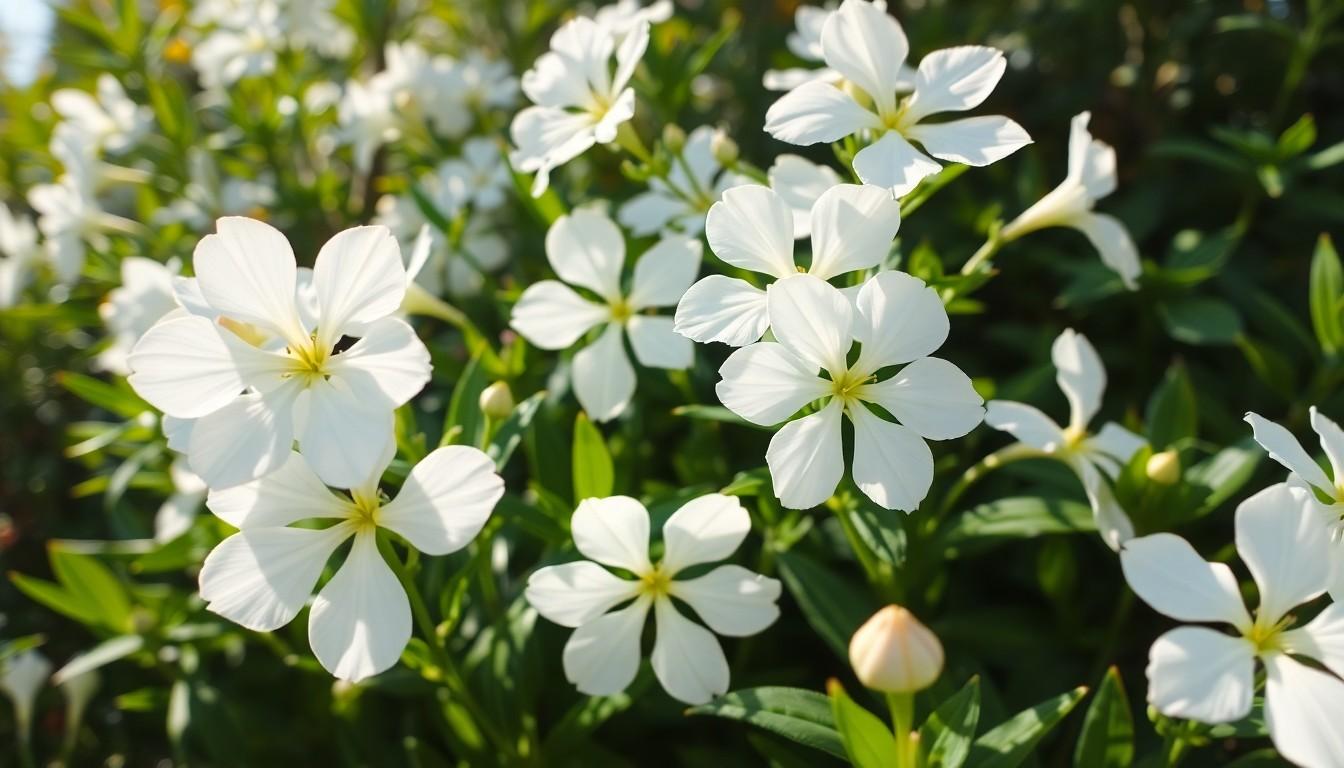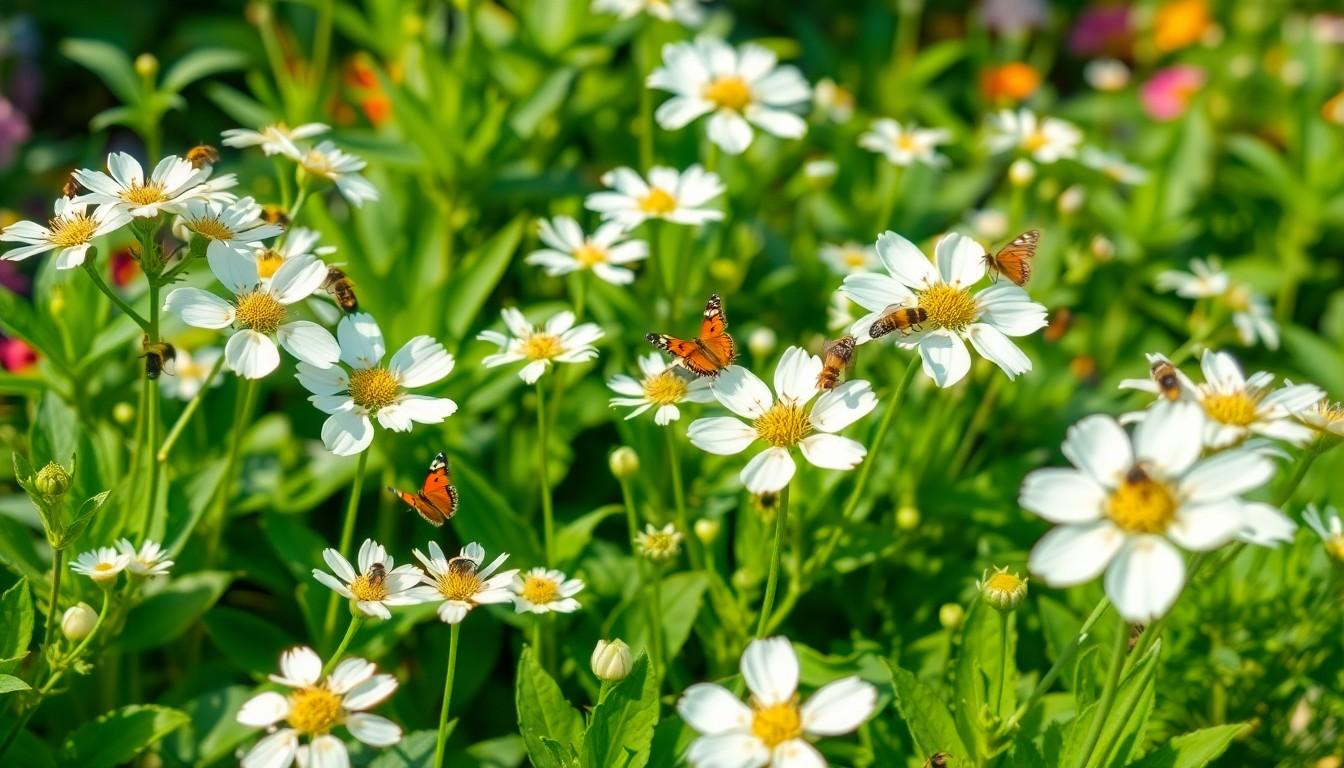Phone:
(701)814-6992
Physical address:
6296 Donnelly Plaza
Ratkeville, Bahamas.

White flowers have a way of captivating anyone who stumbles upon them. Whether they’re gracing a garden or popping up in the wild, these delicate blooms can leave even the most seasoned botanist scratching their head. Identifying white flower plants can feel like a game of botanical hide-and-seek. But fear not, plant lovers! With a little guidance, anyone can become a pro at distinguishing these floral wonders.
Identifying white flower plants requires attention to detail. Key characteristics include petal shape, leaf structure, and growth habit. Observing the flower’s size and fragrance also aids in recognition.
Recognize that many species may share similar white blooms, which increases identification difficulty. Utilizing field guides or plant identification apps can enhance accuracy. Researching the plant’s habitat often reveals essential clues.
Familiarity with common white flowers such as daisies, magnolias, and lilies builds a solid foundation. Investigating bloom time helps narrow down possible species since certain flowers blossom only in specific seasons.
Utilize the shape of the leaves and their arrangement on the stem for further identification. Some plants exhibit notable variegation or texture, which can distinguish them from others. Understanding whether a plant is annual or perennial also aids in proper identification.
Engagement with gardening communities or local botanic gardens provides additional resources and knowledge bases. Connecting with experts or attending flora-focused events fosters a deeper understanding. Observing flowers in different growth stages reveals variations crucial for accurate identification.
Maintaining a field journal can document unique findings. Recording specific details such as date, location, and environmental conditions supports future reference. This systematic approach enhances one’s identification skills over time.
Training the eye to notice subtle differences solidifies identification expertise. Recognition grows with experience, enabling enthusiasts to appreciate the beauty of diverse white flower plants.

Identifying white flower plants holds significant ecological and aesthetic value. Understanding these plants promotes biodiversity and enhances surroundings.
Diverse ecosystems thrive with the presence of white flower plants. These species attract essential pollinators like bees and butterflies. Healthy pollinator populations contribute to food production, supporting local wildlife. Many white flowering plants host beneficial insects, further enriching the ecosystem. Identifying plants accurately allows for targeted conservation efforts. Protecting native white flower species strengthens local habitats, ensuring resilient ecosystems.
White flower plants add elegance to gardens and landscapes. Their striking blooms create visual interest, enhancing the overall beauty of outdoor spaces. Pairing these plants with colorful flora offers pleasing contrasts, inviting admiration. Identifying specific white flowers helps gardeners design cohesive gardens that reflect personal style. Seasonal variations in white flowers introduce freshness throughout the year. Enhancing one’s surroundings with carefully chosen white blooms fosters tranquility and appreciation of nature’s beauty.
Identifying white flower plants requires keen observation and understanding of their distinct features. Focus on several techniques to enhance identification skills effectively.
Visual traits play a vital role in recognizing white flower plants. Examine petal shapes, which can range from round to tubular. Leaf structure also differs significantly; some leaves appear broad while others stay narrow. Observe flower arrangements, as they can form clusters or solitary blooms. Distinguishing unique features like variegation or texture adds depth to identification. Pay attention to the overall growth habit, which can indicate whether the plant is a low-growing groundcover or a tall perennial. Each characteristic contributes essential information for accurate identification.
Understanding habitat and growth conditions greatly aids in identifying white flower plants. Certain species thrive in wet areas like marshes, while others prefer dry, rocky soils. Investigate the surrounding environment to determine plant preferences; sunlight exposure varies among species. Some plants flourish in full sun, while others tolerate partial shade. Noticing nearby flora can provide hints as to which white flowers are likely to grow together. Soil type also influences plant health—some species favor sandy soils, whereas others thrive in clay. Observing these growth conditions offers insight into potential plant identifications.
Identifying white flower plants involves recognizing specific characteristics and knowing common varieties. Here are some key families to consider:
Daisies showcase a range of white blooms, including the Shasta daisy and oxeye daisy. Shasta daisies feature bright yellow centers surrounded by overlapping white petals. In contrast, oxeye daisies have a more slender shape and may have a slightly pointed tip. Leaves are often lanceolate with a rough texture. Growth habit varies from low to upright, commonly thriving in sunny areas and well-drained soil. Observing the flower arrangement and stem structure aids in distinguishing these species effectively.
Lilies present a striking appearance with several notable white varieties, such as the Easter lily and the Madonna lily. Easter lilies exhibit trumpet-shaped blooms, often fragrant, attracting pollinators. Madonna lilies have more open blossoms with a star-like formation. Their leaves are elongated and typically grow in clusters, enhancing their visual appeal. Preferring richer soils and partial shade, lilies thrive in gardens. Identifying these plants often involves noticing the distinctive flower shapes and leaf arrangements.
The rose family includes numerous beloved white flowering plants, such as the white rose and the bridal wreath spiraea. White roses feature velvety petals that bloom in various forms, from classic to hybrid varieties. Bridal wreath spiraea produces cascading clusters of small white flowers, providing a striking contrast against green foliage. Foliage of these plants can range from serrated to smooth, with specific branching styles. These plants adapt well to various environments, making observation of growth habits key for identification.
Identifying white flower plants becomes simpler with the right tools and resources. Knowledge improves accuracy and builds confidence.
Field guides offer detailed descriptions of white flower plants. Utilizing these printed resources, such as the “Peterson Field Guides” or the “National Audubon Society Field Guide,” aids in recognizing specific species through visual aids and organized information. Plant identification apps like “PlantSnap” or “iNaturalist” provide quick access to identification features. Using smartphone cameras, individuals can capture images and receive instant feedback on plant species. Those who prefer digital over print find these apps especially beneficial for on-the-go identification while exploring various habitats.
Online communities and databases foster collaboration among plant enthusiasts. Websites like “iNaturalist” and “Garden.org” allow users to share findings and seek help from experienced gardeners. Engaging with forums provides an opportunity to connect with others who possess similar interests. Local gardening groups on platforms like Facebook can also serve as valuable resources. Members often share their insights on identifying specific white flowers. Utilizing these platforms nurtures knowledge exchange, enriching the identification experience for both novice and seasoned flower enthusiasts.
Identifying white flower plants opens a world of beauty and ecological significance. With the right tools and techniques anyone can enhance their skills and deepen their appreciation for these stunning blooms. By focusing on key characteristics and utilizing resources like field guides and plant apps, enthusiasts can confidently navigate the complexities of plant identification.
Engaging with gardening communities and documenting observations further enriches the experience. As individuals become more attuned to the subtle differences between species they not only cultivate their expertise but also contribute to conservation efforts. The allure of white flowers lies in their elegance and the vital role they play in local ecosystems. Embracing this journey of discovery can transform any garden into a sanctuary of beauty and biodiversity.